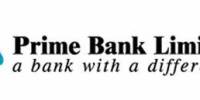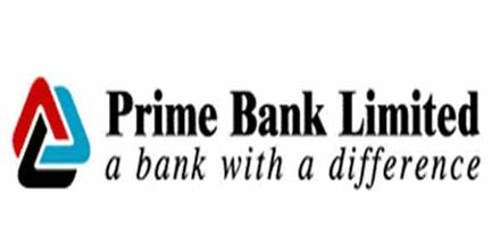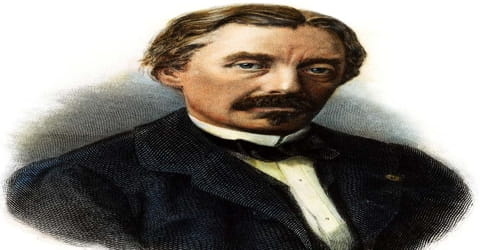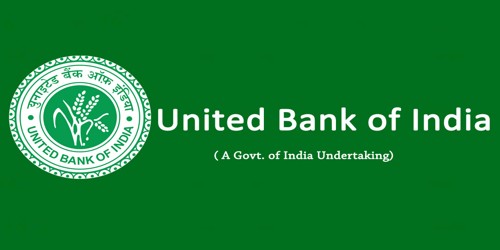This report analyzes the mergers and acquisitions activities in Banking and Financial Services industry with focus on Citigroup. This report explains in greater detail about Mergers as a meeting which benefits both this entities in future growths and also profits. The after-effects plus the consequences determine whether the deal was beneficial in entirety. A brief history of Citicorp and Travelers is also provided to analyze yesteryear followed by the two companies and also the timelines.
Introduction:
This detailed report analyzes the merger and acquisition activities in Banking and Financial Services industry with focus on Citigroup. Emphasis is laid on the first largest corporate merger of Citicorp and Travelers. The report explains in detail about Mergers as an event which benefits both the entities in future growths and profits. The after-effects and the consequences determine whether the deal was beneficial in entirety. The costs incurred by either company are also determinants in the value creation. It also talks about the concentric (related) diversification trend i.e. exploring different segments of the same parent industry, followed by most financial institutions involved in M&A activities. The merger of Citicorp and Travelers proved to be a beneficial step towards the futures of both the companies. This allowed the Citigroup to be named as the largest financial services in the world because of the synergies created by the two companies. A brief history of Citicorp and Travelers is also provided to analyze the past followed by the two companies along with the timelines.
It also describes the various driving forces behind the M&A activities by Citigroup and other financial institutions, such as the share-holder value creation, domestic competitive pressures, globalization of the financial markets, homogenization of financial products, with products being similar at various segments of the markets and also the demands of customers, both retail and commercial, who want to obtain a full range of financial services from a single institution. The type of merger and the level of integration adopted by the two companies in focus is also described in detail.
The macro-environment forces such as economic scenario during the time of merger, the political and legal factors, socio-cultural factors, technological influences, anti-trust obligations, change in leaderships and corporate structure that affect the M&A activities in the financial market is also explained in detail along with the consideration of real life M&A examples in the recent past in the analysis. It also includes the recent developments on Citigroup, the purpose and its consequences for example the recent division of Citigroup into Citicorp-retail and investment banking and CitiHoldings- brokerage and asset management.
History: Citigroup
The formation of Citigroup in 1998 created a new model of financial services organization to serve its clients’ financial needs. Due to the regulatory forces, commercial and investment banking activities were separated. Even though the formation of Citigroup violated the regulatory norms, the deal was finalized and a holding company was formed which opened the doors to financial services conglomerates offering a mix of commercial banking, investment banking, insurance underwriting and brokerage. As the company continued to grow and evolve, it was increasingly evident that such a large, complex grouping of businesses can indeed succeed. With 275,000 employees working in more than 100 countries and territories, Citigroup’s globalism and diversity contribute to its continued success.
One of the largest financial services firms known to man, Citigroup or “Citi” has some 200 million customer accounts and does business in 100 countries. Citigroup offers deposits and loans, investment banking, brokerage, wealth management, alternative investments, and other financial services. The top three competitors of Citigroup are Bank of America, Deutsche Bank and JP Morgan Chase. Reeling from $90 billion in write-downs and losses on mortgage-related securities and other investments, Citigroup announced plans in early 2009 to split itself in two- Citicorp and Citi Holdings. Its history dates back to the founding of Citibank in 1812, Bank Handlowy in 1870, Smith Barney in 1873, Banamex in 1884 and Salomon Brothers in 1910. The different segments in which Citigroup operated before the recent split were: Global Consumer group, Citi Markets & banking, Global Wealth Management, Citi Alternative Investments & other corporate affairs. Other major brand names in Citigroup’s diverse portfolio which are a part of different segments, before the split included Citi Cards, CitiFinancial, CitiMortgage, CitiInsurance, Primerica, Diners Club, Citi Private Bank, and CitiCapital.
i. Citicorp:
Prior to its merger with Travelers Group, Citicorp was the #3 US bank and the world’s #1 issuer of credit cards. Bank of America pioneered the industry followed by JP Morgan Chase. American Express was also a strong competitor for CitiCorp. With some 3,400 locations in 98 countries and territories, Citicorp was the world’s only truly global consumer bank, offering customers worldwide the same set of banking, savings, and financing services. These operations accounted for half of its sales; the balance came from commercial banking, including corporate finance and trading. Citicorp was made the holding company of Citibank in 1974. In 1997 Citibank became the first US bank in China to conduct Yuan-based transactions, serving local corporations and registered foreign enterprises from its offices in Shanghai.
ii. Citicorp (NYSE:C) and Travelers Merger (NYSE:TRV)
On April 6, 1998, the merger between Citicorp and Travelers Group[2] was announced to the world, creating a $140 billion firm with assets of almost $700 billion. The deal would enable Travelers to market mutual funds and insurance to Citicorp’s retail customers while giving the banking division’s access to an expanded client base of investors and insurance buyers.
Although presented as a merger, the deal was actually more like a stock swap- which will be explained in detail later on in the paper, with Travelers Group purchasing the entirety of Citicorp shares for $70 billion, and issuing 2.5 new Citigroup shares for each Citicorp share. Through this mechanism, existing shareholders of each company owned about half of the new firm.[3] While the new company maintained Citicorp’s “Citi” brand in its name, it adopted Travelers’ distinctive “red umbrella” as the new corporate logo, which was used until 2007.
The chairmen of both parent companies, John Reed and Sandy Weill respectively, were announced as co-chairmen and co-CEOs of the new company. The remaining provisions of the Glass-Steagall Act – enacted following the Great Depression – forbade banks to merge with insurance underwriters, and meant Citigroup had between two and five years to divest any prohibited assets. The passing of the Gramm-Leach-Bliley Act in November 1999 vindicated Reed and Weill’s views, opening the door to financial services conglomerates offering a mix of commercial banking, investment banking, insurance underwriting and brokerage. Below is a basic chart explaining the stock price movements for C & TRV before & after the merger.
Event A: Indicates a sharp spike in the stock price of CitiCorp (pre-merger) at the time of the announcement of the merger.
Event B: Indicates a slight drop in the stock price at completion of the merger.
Why Financial Services Merge
Various environmental developments have made existing institutional configurations obsolete in terms of financial firms’ competitiveness, growth prospects and prospective returns to the shareholders. The regulatory and public policy changes that allow firms broader access to clients, functional lines of activity or geographic markets and technological scaling are responsible for triggering corporate actions in the form of M&A deals. Along with the benefits, the merging firms have to incur huge initial costs to formulate and process the deal. Other than the price of the M&A, the costs may include re-structuring costs, integration costs and regulatory fees. Below is the breakdown of some of the factors influencing an M&A transaction.
Cross Selling/Synergy: Cross-selling is defined by as the action or practice of selling among or between established clients, markets, traders or that of selling an additional product or service to an existing customer. The merger of Citicorp and Travelers to form Citigroup was largely revenue driven to take maximum advantage of the two firms’ strengths in products and distribution channels dispersed in different geographies. After the merger Citigroup was able to provide a package of financial services instead of the individually characterized service. For example Citicorp with a number of new mortgage orientations every year was able to bundle travelers insurance in a package for customers. Citicorp’s private banking also offered clients such services as trust and estate planning, which Travelers did not have. Cross selling alone enabled Citigroup to generate over the next two years an additional $600 million in earnings. The arrangement solved Citicorp’s and Travelers’ biggest problems. Citicorp could get a stronger U.S. direct-sales force to market Citi checking accounts, mutual funds, and credit cards. In addition, while Citi had private bankers catering to the very wealthy, Travelers has 10,300 Salomon Smith Barney brokers, 80,000 part-time Primerica Financial Services insurance agents, and 100,000 agents that sold Travelers insurance.
Economies of scale: In an information-intensive industry with high fixed costs such as the financial services, there is a huge potential for scale economies. This refers to the fact that the combined company can often reduce duplicate departments or operations, lowering the costs of the company relative to theoretically the same revenue stream, thus increasing profit. Benefits from the economies of scale can be realized in the company’s information flow. If a company has a larger customer base, the cost per customer base can be reduced with economies of scale facilitating cross selling. In the banking sector of the financial industry, there is a strong need to manage huge databases containing information on demographics, transaction history etc. The software based costs are huge. The global information technology spending by financial services institutions will reach $353.3 billion in 2009, representing a decline of 1.3% over 2008, when the research firm recorded IT spending at $358 billion. This figure is substantially lower than the 4.5% growth achieved in 2008 and 6.4% growth in 2007. Hence, a larger database would offset these costs as the marginal cost of adding a new customer is negligible.[1] Hence, cost can be distributed over a larger customer base. This also avoids costs related to duplication of information.
Revenue economies of scope: This refers to the savings in the overall cost to the buyer of multiple financial services from a single supplier as compared to that from separate suppliers. The costs may include the transaction costs, monitoring costs and costs associated with separate contracts. Secondly, if the buyer receives service through the same supplier he might be willing to pay for the service at a premium.
Diversification: Greater diversification of income can be achieved from multiple products, client groups and geographies. Combining the two institutions will make them less dependent on volatile earnings streams. For e.g. earnings of a firm under Travelers umbrella as a percentage of travelers overall earnings would fall as the earnings would now be a percentage of the larger Citigroup. This smoothens the earnings result of a company, which over the long term smoothens the stock price of a company, giving conservative investors more confidence in investing in the company
Explore/Dominate new markets: In addition to operating economies and revenue synergies, financial firms will also seek to dominate markets. The two merging firms may take advantage of the monopolistic and the oligopolistic returns. It gives them an opportunity to grow and explore new markets and market segments. This may also give rise to the possibility of an anti-trust action to prevent exploitation of the monopoly positions in the financial sectors. Post merger Citigroup became the world’s largest financial institution. The deal between Citicorp and Travelers gave Travelers instant access to Citi’s 750 offices outside USA and made it an international financial service provider.
Regulatory support: The failure of any major financial institution could cause unacceptable systematic consequences. Hence, there is high possibility of that firm being bailed out directly by the governing body and indirectly by the tax-payers. In US, this policy came into limelight during early 1980s. In the present scenario this action is driving the global economy. In October 2008, the US govt. announced Emergency Economic Stabilization Act of 2008, commonly referred to as the bailout of the U.S. financial system. It was a law enacted in response to the global financial crisis of 2008 authorizing the United States Secretary of the Treasury to spend up to US$700 billion to purchase distressed assets, especially mortgage-backed securities, and make capital injections into banks. In the political environment and any market crisis these plans help to create a public sector safety to limit damage to the shareholders of damaged banks or any financial firm.
Sustain market pressures: Most financial services merge to avoid market pressures to lose its active status in the industry. The financial industry is consolidating at an accelerating speed. Merrill Lynch merged with Bank of America primarily to strengthen its survival possibilities in the industry.
III. Merger Integration Process:
The traditional approach of applying the post merger integration phase after the deal may lead to frictions and delays in the results foreseen in the pre-merger phase. This also might diminish the benefits of the transaction. Applying the integration process at an early stage can yield disciplined results. Following the announcement of the merger in the month of April, all Citicorp and Travelers Group divisions merged to form Citigroup on 8th October. Therefore, it took six months for Citigroup to be formed and all its segments to be integrated in a new holding company. Similar integration of Barclays-Lehman Brothers was complete in 90 days and the recent Bank of America- Merrill Lynch integration was slated to be complete within 60 days.
Type of Merger:
Multifunctional financial firms’ merger and acquisitions may take a number of distinct forms listed below:
Type A: In this type of merger, the companies would transform into a fully integrated financial firm under a single corporate structure, supported by a single capital base. This firm would provide services in banking, asset management, securities and insurance.
Type B: In this type of merger, the merging entities would transform into a partially integrated company which conducts commercial and investment banking within the same entity but undertakes insurance underwriting and distribution, mortgage banking and other specialized services through separately capitalized subsidiaries.
Type C: In this type of merger, a commercial bank forms the parent of subsidiaries engaged in a variety of other financial services ranging from investment banking to insurance.
Type D: This involves creation of a holding company which controls affiliates engaged in commercial banking, investment banking, insurance and other types of financial and non-financial businesses.
The chart below describes a typical Type D Merger: The merger of Citicorp and Travelers was a Type D merger where a new holding company; Citigroup was formed controlling different affiliated segments.
Drivers of a Merger:
Regulatory Issues: This would include terms of merger, covenants and agreements, legal matter, tax consequences, accounting treatment, etc.
Characteristics of services involved: The merger structure strongly focuses on the product mix offered by the two companies. Citicorp was one of the largest financial institutions and Travelers was one of the largest insurance underwriter and distributor.
Demand side issues: This would relate to the market structure and client preferences. Formation of Citigroup would give customers a one stop shopping for all the financial and non-financial services as the Co-CEOs of the Company; Sandy Weill of Travelers and John Reed of Citicorp labeled Citigroup as the ‘Financial Supermarket’. But, selling of Travelers; insurance underwriting business in 2002 and selling half of Smith Barney brokerage into Morgan Stanley proved the label unsuccessful on long term basis.
Other Benefits: According to Philip K. Smith – a consultant, the creative and informed use of a bank holding company can help achieve many of the goals of an institution. Some are explained below:
Capital and Financing:
- Flexibility: The flexibility of the holding company provides much more efficient financing and use of capital. Such flexibility allows a holding company to raise capital and achieve financial flexibility less expensively and easier than an institution alone. For example Bank Holding Companies may borrow money with the debt treated as a liability at the holding company level; however, the funds can be “pushed down” to the bank as new equity capital for the bank.
- Alternative equity forms: Since a holding company is simply a state chartered corporation, it can utilize virtually any type of equity structure. For example, it can use preferred stock as well as common stock. It can also use preferred stock with an adjustable rate dividend, or preferred stock convertible into common stock
- Hybrid Debt/Equity Securities: In addition, a bank holding company can issue trust preferred securities which the Federal Reserve considers to be equity at the bank holding company, yet the Internal Revenue Service (IRS) treats it as debt.
Typology of M&A integration:
The three strands to the conceptual basis for integration post M&A deals that seem to apply to the financial service sector and bear problems of integration are:
Strategic fit: M&A transactions in concentric markets that can possibly demonstrate a strategic fit should perform better than the un-related situations due to possible benefits of economies of scale, economies of scope, market reach and market dominance. Citicorp’s dominance in the commercial banking industry and Travelers excellence in the insurance underwriting and distribution was seen as one of the ideal strategic alliances.
Organizational fit: In many cases, poor post M&A transactions are linked to the organizational problems encountered during the integration process. This negatively impacts the post acquisition process. Having two persons as co CEOs for Citigroup proved unfavorable for the organization as the differences amongst the leaders of the company offset the organizational synergy. John Reed was a visionary, committed to long term thinking and invested on projects that could realize his vision. On the other hand, Sandy Weill was an aggressive person famous for his intuitive thinking and reckless agreements on M&A transactions. A year after the integration shareholders that formed an integral part of the wealth maximization model of Citigroup felt the friction between the two CEOs which led to the removal of John Reed as the co CEO in 2000.
Knowledge-based view: This considers the human resources dominate the material resources of the firm. There is a strong link between the knowledge of employees and the benefits to be extracted from the available material and financial resources. The uniqueness of employee knowledge is identified as the source of sustainable competitive advantage. Citigroup benefited from the sales work force of Travelers insurance as they were further trained and inducted into Citibank’s credit cards division. But at the same time in September 1998, Citigroup announcing restructuring plans laying off a substantial amount of work-force put questions marks on its pre-merger claimed synergy.
Alternative Approaches to Merger Integration:
Three merger-integration approaches have been identified:
- Absorption approach: This usually applies to M&A transactions within the same financial services sector in which one of the main justifications is the realization of economies of scale or operating efficiencies that can apply to overlapping operations.
- Symbiotic Approach: This generally applies to cross-sector transactions for example between commercial and investment banking or commercial banking and insurance. In this, the cultural differences can be fairly wide and therefore may take time to bridge. This approach has also been used in market strengthening situations.
- Preservation approach: This involves justification for a merger or acquisition leveraging knowledge about the new business or industry area and its competencies.
In this case, Citigroup adopted a combination of the Symbiotic approach and the Absorption approach. Symbiotic approach was because of the fact that it was a cross-sector transaction or a commercial banking and insurance transaction. Since, Citicorp to was a holding company of various commercial and specialized financial and non-financial services, it had many overlapping operation with Travelers and hence could make us of the absorption approach. Also, based on the firm requirements a chart can be drawn to prioritize the approaches.
Integration: Information Technology:
Information Technology (IT) systems form the core of today’s financial institutions and underpin their ability to compete in a rapidly changing environment. Technological innovation affects not just banking, financial services, and regulatory policy, but also the direction of the economy and its capacity for continued growth. Many banks are making what seem like huge investments in technology to maintain and upgrade their infrastructure, in order not only to provide new electronic information-based services, but also to manage their risk positions and pricing.[1] At the same time, new off-the-shelf electronic services, such as on-line retail banking, are making it possible for very small institutions to take advantage of new technologies at quite reasonable costs. These developments may ultimately change the competitive landscape in financial services in ways that we cannot predict today. Consequently, IT integration has become a focal point of the mergers and acquisitions process in the financial services sector. It is often a key source of synergies that can add to the credibility of an M&A transaction. Chart below estimates the global spending by financial services on information systems in 2006 through 2010.
As one can see from the chart, the global IT spending by Financial Services would reach $353 billion by the end of 2009 and increase by 3.11% in 2010 to $364 billion. Historically, bank mergers can result in significant IT cost savings, with the potential of contributing more than 25% of the synergies in a financial industry merger. This suggests that finding the right IT integration strategy is one of the more complex subjects in a financial industry merger. The retention of an IT system or implementation of a new system is one of the most important decisions the merging firms make. Such IT based struggles have been estimated to consume 40% of more staff resources than in the case of straightforward harmonization of IT platforms. The time factor also plays an important role in IT integration. Slow IT integration has the obvious potential to delay in many of the other non-IT integration processes and eventually delay the overall integration process.
Influence of IT integration on Citigroup:
The Information Systems that managed many arms and legs of the company had never been properly or sufficiently integrated. Citigroup CEO Vikram Pandit himself admitted that each of the businesses was operating with its own back office. He told investors and analysts last May that Citigroup had a huge number of over 140,000 people in IT and operations, 16 database standards and 25,000 developers. This resulted not only in waste but disallowed any opportunity to leverage the organization. The recent split of Citigroup into two-CitiCorp and CitiHoldings might just offset years of IT integration work, conducted by Citigroup following the merger of Citicorp and Travelers Group in 1998. It took Citigroup almost 10 years to be slightly efficient in their IT systems. This split would force Citigroup to incur huge costs to standardize their IT platform as they split their businesses. The massive 52,000 layoffs in the IT department of Citigroup, shows the huge costs associated with IT human staff and its vulnerability to the economic slowdowns.
IT integration and Alignment issue:
Information Technology can be either a stumbling rock or an important success factor in a bank merger. The time delays can be reduced or eliminated and cost savings can be achieved if the pre-merger IT setup is efficiently aligned. The extent to which the IT systems of the target be integrated into the acquirer’s existing infrastructure is the first step in initializing the alignment process. This process primarily depends on the merger goals for example cost reductions or new revenue streams. Pre-merger, CitiCorp was one of standardized institutions in terms of IT with highly advanced preferences and over $2 billion IT spending where as Travelers was not so IT efficient. Once the degree of alignment between business strategy and IT strategy has been assessed, the fact whether existing IT infrastructure can support a potential IT merger integration becomes apparent. The degree of integration also depends upon, the integration process adopted by the merging entities such as the horizontal, vertical integration, diversification or consolidation. Cost-driven M&A deals usually lead to a full, in-depth integration. In this case, integration adopted by Citigroup was Vertical integration or product driven integration where the primary objective is to add new products to the existing production chain or line.
Regulatory Influences:
The Glass-Steagall Act of 1933:
Following the Great Crash of 1929, one of every five banks in the United States of America failed. Many saw market speculation engaged in by banks during the 1920s as a cause of the crash. In 1933, Senator Carter Glass and Congressman Henry Steagall introduced the historic legislation called The Glass-Steagall Act of 1933 seeking to limit the conflicts of interest created when commercial banks underwrote stocks or bonds. In the early part of the century, individual investors were seriously hurt by banks whose overriding interest was promoting stocks of interest and benefit to the banks, rather than to individual investors. The new law banned commercial banks from underwriting securities, forcing banks to choose between being a simple lender or an underwriter (brokerage). The act also established the Federal Deposit Insurance Corporation (FDIC), insuring bank deposits, and strengthened the Federal Reserve’s control over credit. In 1956, the Bank Holding Company Act was passed that extended restrictions on banks, including that bank holding companies owning two or more banks cannot engage in non-banking activity and cannot buy banks in another state. Since, the act was put into force, many efforts were made to loosen some restrictions on financial institutions and in January 1989 the Federal Board authorized an J.P. Morgan, Chase Manhattan, Bankers Trust, and Citicorp to expand the Glass-Steagall loophole to include dealing in debt and equity securities in addition to municipal securities and commercial paper. This marked a large expansion of the activities in the banking and financial industry. Consequently in 1990, J.P. Morgan became the first bank to receive permission from the Federal Reserve to underwrite securities, so long as its underwriting business did not exceed the 10 percent limit.
The Gramm-Leach-Bliley Act
Following the merger announcement Citicorp and Travelers on April 6, 1998, the US Federal Board under tremendous pressure to modernize financial services legislation, after 12 attempts in 25 years on November 12 1999, finally repealed The Glass-Steagall of 1933 and The Gramm-Leach-Bliley Act, also known as the Gramm-Leach-Bliley Financial Services Modernization Act was enacted that opened up competition among banks, securities companies and insurance companies.
Macro-Economic Influences:
Macro-economic factors such as economic slowdowns have major effects on the performance of a financial institution which in turn affects the performance of any firm in the process of a merger and acquisition. The chart below displays performance of the leading financial institutions in the US and in the world in terms of their market capitalization.
Empirical Trends:
Mergers and Acquisitions that work tend to focus the activities of the acquiring firm either geographically, or by product or by clients which in turn allows the realization of operating efficiencies and maximizes the firm’s market footprint. Constancy has long been the hallmark of the banking industry, but the ability to adapt may be a bank’s greatest asset. A study by Bank for International Settlements concluded that majority of mergers and acquisitions have had disappointing returns. The primary reason the study suggested was the underestimation of organizational problems and tendency to overpay for targets. Industry leaders such as JP Morgan Chase & Co., Citigroup have attained the positions through mega-merger deals.
Citigroup (NYSE: C):
Citigroup’s M&A history has been the most fascinating. The illustration below explains the developments in the formation of Citigroup from 1987 through 1998.
Primerica which itself was an amalgam of several predecessor firms acquired Smith Barney in 1987 and acquired Travelers Corp in 1992-93. It then acquired Smith Barney in 1987 and Travelers Corp. in 1992-93 to form Travelers Inc. As Travelers Inc. it acquired Shearson Lehman Brothers Inc. in 1996, Salomon in 1997. It then acquired CitiCorp in 1998 to form a new holding company Citigroup.
JP Morgan (NYSE:JPM) and Chase (NYSE:CMB):
JP Morgan Chase and Co. is one of the oldest financial services firms in the world. It is one of the top leaders in financial services with assets of $2.3 trillion. and the largest market capitalization and deposit base of any U.S. banking institution. It was formed in 2000 when Chase Manhattan Corporation acquired J.P. Morgan & Co. The formation of JP Morgan Chase & Co. was also a result of a number of different mergers and acquisitions.
The above two illustrations show the influence of extensive mergers and acquisitions in the banking and financial services industry. Mergers and acquisitions has been the key to pioneer the industry and also survive industry pressures. JP Morgan(JPM) and Chase (CMB) merged to form JP Morgan Chase with an aim to create an organization with unparallel client base, global capabilities and product leadership in growth markets.[1] Both CMB and JPM had been struggling to establish themselves in the securities underwriting and M&A advisory businesses. Amidst takeover speculation of the possible merger of Chase and JP Morgan, stock market reacted and JP Morgan showed a 60% increase in its stock price over the period of three months. The merger was an all-stock offer by Chase of 3.7 shares of the new firm for each share of JPM. The deal was closed at $30.9 billion. Below is the chart that shows the stock price movements of JPM throughout the year 2000.
Event A shows the spike in the stock price of JPM when the rumors of a possible merger started. Over the period of three months the stock price increased by 60% and started the downward trend in September 2000 when the merger was announced shown by Event
Cross Border Acquisition: Barclays (NYSE: BCS) and Lehman Brothers (LEH)
Barclays bank acquired Lehman Brothers Inc. soon after it filed for bankruptcy in the midst of the financial crisis in September 2008. Chart below shows the share price movements of both Barclays and Lehman Brothers before, during, and after the deal.
Key Lessons:
Fundamentally, throughout this report, key drivers to success of bank mergers and integrations are experienced and determined synergies, significant net cost savings, swift decision-making and the cost of IT integration. In the case of Citigroup, the merger of CitiCorp and Travelers aimed at creating a Financial Supermarket in the US financial industry. Integration had to play an important in the merger, and recent diversifications by Citigroup in to CitHoldings and CitiCorp could just offset possibility of achieving economies of scale. On IT integration, Citigroup accomplished this objective through the execution of its strategic IT execution by combining the not so technologically advanced Travelers with highly advanced technology of CitiCorp to attain cost savings and reduce redundancies. Regarding the swiftness of the decision making during the integration phase, Citigroup completed its merger scheme within six months as it involved a complex procedure of forming a new holding company.
Taken all the above key drivers to merger success into account, Citigroup seemed to do well in terms of strategies and implementation. However, macro-environmental factors tend to hamper the success of mega-mergers like that of the CitiCorp and Travelers. Fluctuations in the economic conditions, has empirically proven to have shortened the lifetime of proposed synergies.
In mergers and acquisitions the systematic and unsystematic implications are important determinants. The merging entities should be able diversify the unsystematic implications i.e. company-related as the systematic implications or risks i.e. market related implications are not diversifiable. The mergers and acquisitions are bound to provide success but numerous instances of unfavorable business cycles and other adverse circumstances could make it economically less efficient. Hence, the merits of merger in the banking and financial industry may appear at a slower rate due to fluctuations in the global economy.
















